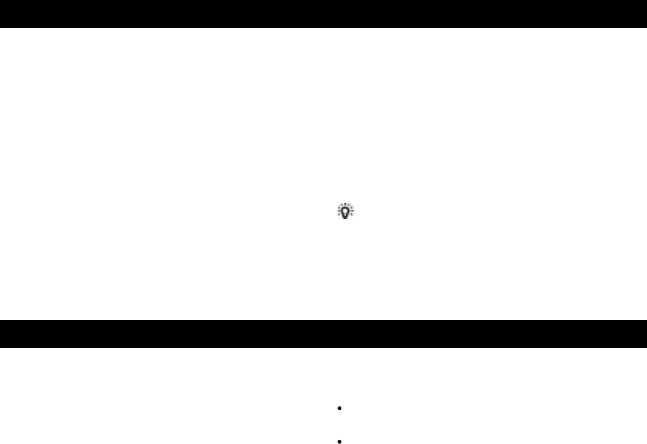
29
TRACKER 5100/5100i/5500/5500i Installation and Operation Manual
NAVMAN
13-5 Track setup
Tracking records and displays the boat’s course on
the chart (see section 3-5).
Record
Off: The TRACKER stops recording a track.
1 to 5 (select a track number): The TRACKER
starts recording the boat’s course into the
selected track.
Display
Off: No track is shown on the chart.
1 to 5 (select a track number): The selected
track is shown on the chart.
Plotting Interval
The options are Distance or Time.
Distance
Select the distance plotting interval: 0.01, 0.05, 0.1,
0.5, 1.0, 2.0, 5.0 or 10.0 distance units.
Time
Select the time plotting interval: 1, 5, 10 or 30 seconds
or 1 minute.
Memory used
The percentage of memory used in the track being
recorded.
Tip: Use the user card display to check the number
of points recorded in each track (see section 11).
Delete track
1 Select the track number to delete (1 to 5).
2 Select Yes to confirm.
The data in the selected track is deleted.
13-6 Alarms setup
Fuel Cal
Without calibration the error in fuel measurements
can be up to ± 10%. Calibration can reduce the error
substantially. For twin engine installations calibration
of each transducer is required.
Calibrating the fuel transducer requires accurate
measurement of the fuel used. This is easiest with a
small portable tank. It should be noted that due to air
pockets, it is very difficult to fill underfloor tanks to
the same level twice. At least 15 litres (4 US gallons)
should be used to ensure an accurate calibration.
(The more fuel used, the more accurate the
calibration will be.) Each transducer in a twin engine
installation must be calibrated separately. This may
be done at the same time with two portable tanks, or
at different times using one tank at a time.
The procedure is:
1 Select Clear Used to set Used to zero.
2 Connect the measurement tank(s) to the
engine(s) via the fuel transducer(s).
3 Run the engine(s) at normal cruising speed until
at least 15 litres (4 US gallons) is indicated
(30 litres [8 US gallons] for twin engines).
For alarm operation, see section 2-5. To turn off an
alarm which is sounding, press ESC.
Arrival radius alarm
When the arrival radius alarm is enabled, an alarm
will sound:
a When the boat is going to a point and the boat
comes within the arrival radius of the
destination.
b Or when the boat is navigating a route and the
boat comes within the arrival radius of a
waypoint in the route.
To enable the alarm, enter an arrival radius (up
to 9.99 distance units).
To disable the alarm, set the arrival radius to Off (0).
Anchor alarm
When the anchor alarm is enabled, an alarm will
sound when the boat moves by more than the anchor
alarm distance.
4 Check the actual amount of fuel used per
engine. The easiest way to do this is to refill
the tank(s) to the original level(s) and record
the value(s) shown on the fuel dispenser.
5 Select Fuel Cal. The amount of fuel that the
TRACKER has measured is displayed.
Change the number to the actual fuel amount
used. (Repeat for the other engine in a twin
engine installation).
Flow Filter
Normally engines do not draw fuel from the tank at a
steady rate. To give a stable fuel flow reading, the
TRACKER calculates the flow values by taking several
measurements and averaging them. The flow filter
sets the period over which the fuel flow is averaged,
and can be set from 1 to 180 seconds or Off.
Set the flow filter to the lowest value which give a
stable flow. Usually a value of 10 to 15 seconds will
give a satisfactory result for carburettor engines. Fuel
injected engines may require a larger value.
This setting affects the Flow rate and Economy
displays. It does not affect the fuel used measurement.


















